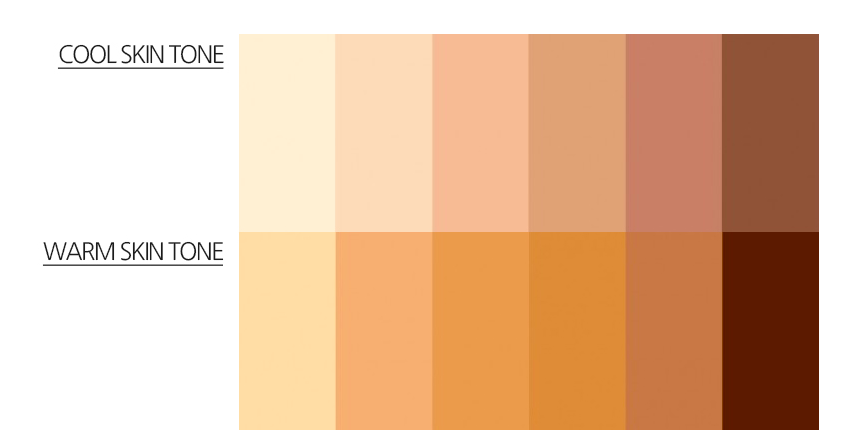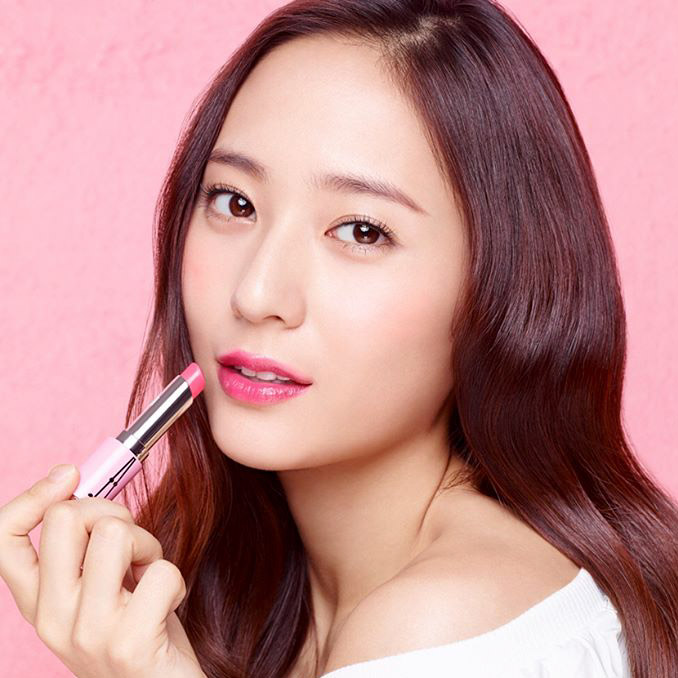We’re letting you in on a beauty secret today: how to find your skin tone like Korean women do. Hint: It involves using the four seasons of the year as a guide.
You know those colors that just don’t plain work for you? For me, pink and navy tend to make my complexion look brighter, while orange and brown always make me look ashy or washed out. As much as I’d love to rock the camel colored coat or the light coral lips Korean drama stars are wearing, I know it takes work and a couple advanced makeup techniques to make that color look good on me.
Depending on your complexion, the color you wear can make your skin look bright and even or highlight your blemishes. So if you wear the right color, you can make your skin look more even without the help of makeup. Typically, a quick way to figure out if a color would be flattering on you is to determine if your skin tone is warm, cool, or neutral. This is different from your skin color, as your tone has more to do with your skin’s undertones than the actual color of your skin:

Image Credit: Hellomilja
There are a couple simple tricks on how to find your skin tone. First, the vein test: Look at the veins on your wrist. If they’re blue or purple, you are cool tone. If they’re green, you are warm tone. If it’s in-between, you are neutral tone. Another trick is to put on a hot pink lipstick on one side of your lips and a bright orange one on the other. If pink wins, you’re cool tone, and if orange wins, you’re warm tone. If both, you’re neutral.

Another trick on how to find your skin tone is if you put your hand next to each of these colors. If your skin tone looks more even with the color on the left, you are cool tone. If your skin looks more even with the right, you are warm tone.
But as it is typical with Korean women, they like to go above and beyond when it comes to beauty and fashion. Not only do they use the cool and warm tone distinction to choose the right colors for their complexion, but they take it a step further and use the four seasons to label their skin tone.
Although this sounds complicated, it just means that cool and warm tones further divide into two seasons. Warm tone splits into spring and fall while cool tone splits into summer and winter. For neutral tones, you have to choose either warm or cool tone, depending on which one you’re closer to, and start from there.
For warm tones, “spring warm tone” indicates that your complexion looks most even when you wear bright and lively colors, while “fall warm tone” indicates you’re better off sticking to darker, more muted undertones. If you’re fall warm tone, think of typical fall colors, like pumpkin spice and caramel:
Image Credit: Powder Room
For cool tones, “summer cool tone” indicates that you should stick to colors that have a grey undertone, while “winter cool tone” indicates that you should stick to colors that are vibrant and strong.
Image Credit: Powder Room
As you probably noticed, this is way harder to do at home than a simple vein test. That is why many Korean women pay for a color matching service called the personal color diagnosis, in which a colorist uses a machine called Cube to first detect the exact level of brightness, yellowness, and redness of your skin tone.
Image Credit: Colorel Blog
Then, the colorist drapes different colors of fabric next to your makeup-free face to determine which color palette is the most flattering for your complexion. The number of drapes the colorist has on hand can go up to over 200!
Image Credit: Cocory Blog
Once the colorist determines your skin tone in terms of the four seasons, she or he provides you with a detailed list of recommended colors. This color palette is what Korean women call your “personal color.” The colorist’s personal color recommendations apply not only to clothing and makeup but also to hair and nails. Often, the colorist will ask you to pull out your makeup bag and compare the products to the colors the colorist recommends. Or the colorist will pull out a tray of nail polishes and wigs to show you which nail and hair color to try out next.
Image Credit: Colorel Blog
So how much does this “how to find your skin tone service” cost in Korea? It depends on the area and the colorist, but the price ranges between $50 to $150 for one person and takes 1-2 hours.
This trend of finding your personal color explains why many Korean brands are coming out with makeup products designed for specific skin tones–for instance, the Etude House Personal Color Eye Palette, which is divided into warm and cool tones:
Many Koreans also try to do a personal color diagnosis at home by holding up a range of colors next to their bare faces or by buying color palette books designed to help determine your personal color.
The bottom line
Knowing your personal color will certainly have its advantages; when you know what colors will be flattering, you’ll have an easier time shopping online, and you might even need to apply less makeup to make your face look even.
But if you want to rock a color, just rock it. When it comes to clothes, you can choose to wear only the things that suit your body type, or you can just wear whatever you want. I think the same goes for makeup, hair, and nail colors. It’s not entirely necessary to know your exact skin tone using the four seasons, especially if personal color diagnosis is hard to come by where you live. Just knowing whether you are warm or cool tone should suffice to make a good educated guess when you’re shopping.
